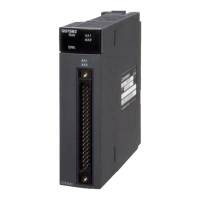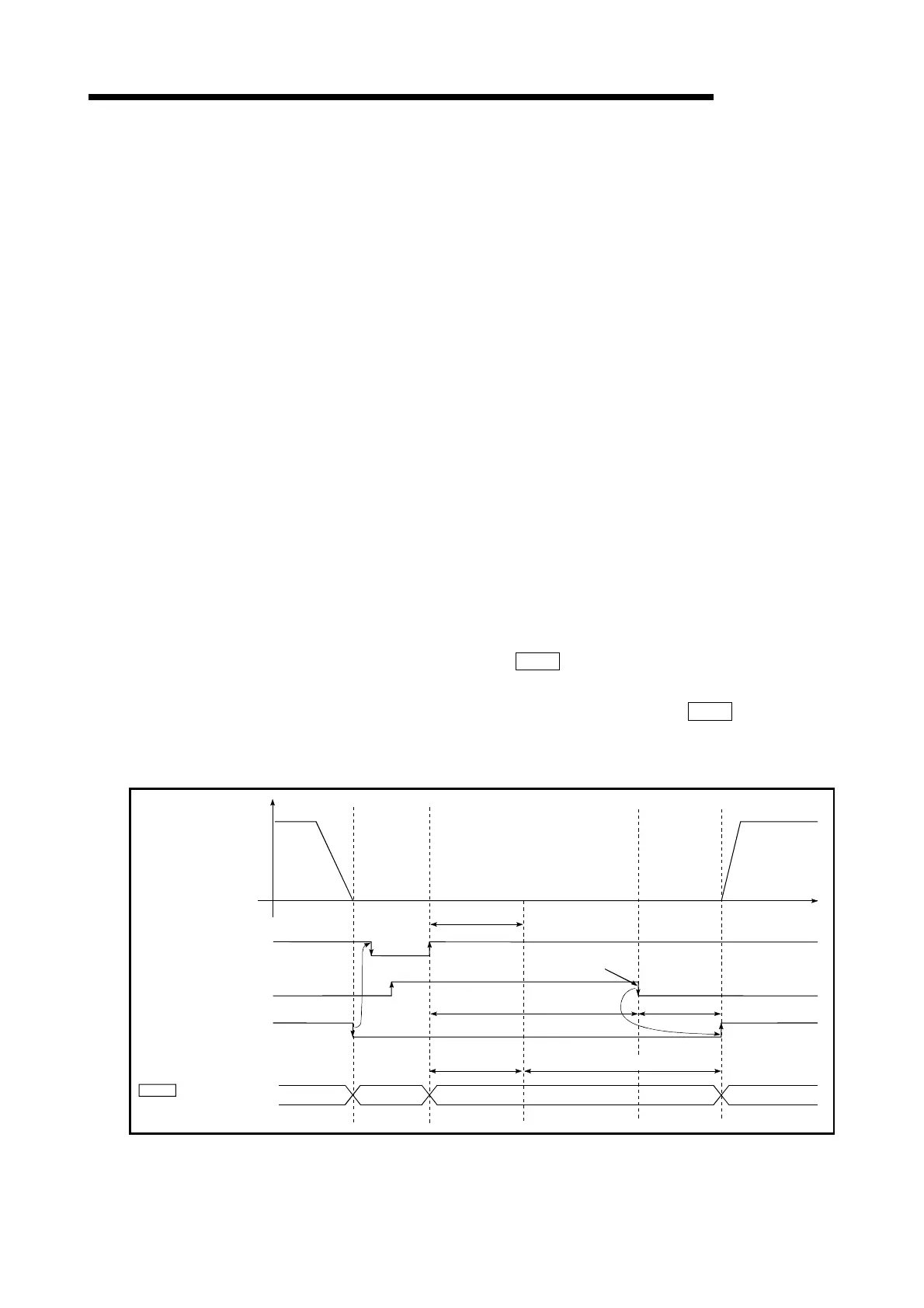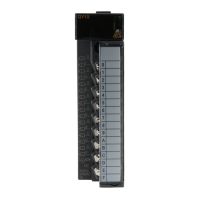12 - 84
MELSEC-Q
12 CONTROL SUB FUNCTIONS
12.7.8 Pre-reading start function
The "pre-reading start function" does not output pulses while the execution prohibition
flag is ON if a positioning start request is given with the execution prohibition flag ON,
and starts servo within 3ms after OFF of the execution prohibition flag is detected. The
positioning start request is given when the axis is in a standby status, and the
execution prohibition flag is turned OFF at the axis operating timing. This shortens the
virtual start time. The QD75 normally takes 6 to 7ms from when it receives a
positioning start request until it starts servo (start time). Some systems often need the
start time to be shortened. This "pre-reading start function" can improve the tact time of
the system.
The "pre-reading start function" will be explained below.
[1] Controls
[2] Precautions during control
[3] Program examples
[1] Controls
The pre-reading start function is performed by turning ON the positioning start
signal [Y10, Y11, Y12, Y13] with the execution prohibition flag [Y14, Y15, Y16,
Y17] ON, or by executing the dedicated instruction (PSTRT1, PSTRT2, PSTRT3,
PSTRT4). However, if positioning is started with the execution prohibition flag
ON, the positioning data is analyzed but servo start is not provided. While the
execution prohibition flag is ON, "
Md.26
Axis operation status" remains
unchanged from "5: Analyzing". Pulse output starts within 3ms after the execution
prohibition flag [Y14, Y15, Y16, Y17] has turned OFF, and "
Md.26
Axis
operation status" changes to the status (e.g. during position control, during speed
control) that matches the control system. (Refer to Fig. 12.48)
V
Positioning start signal
[Y10,Y11,Y12,Y13]
Execution prohibition flag
[Y14,Y15,Y16,Y17]
BUSY signal
[XC,XD,XE,XF]
ON
OFF
OFF
OFF
ON
ON
Ta
OFF
ON
ON
Md. 26 Axis operation
status
Start time
Positioning start timing
3ms or less
Positioning data
analysis
Execution prohibition flag OFF waiting
Standby Analyzing
During position
control
During position
control
Fig. 12.48 Operations of pre-reading start function

